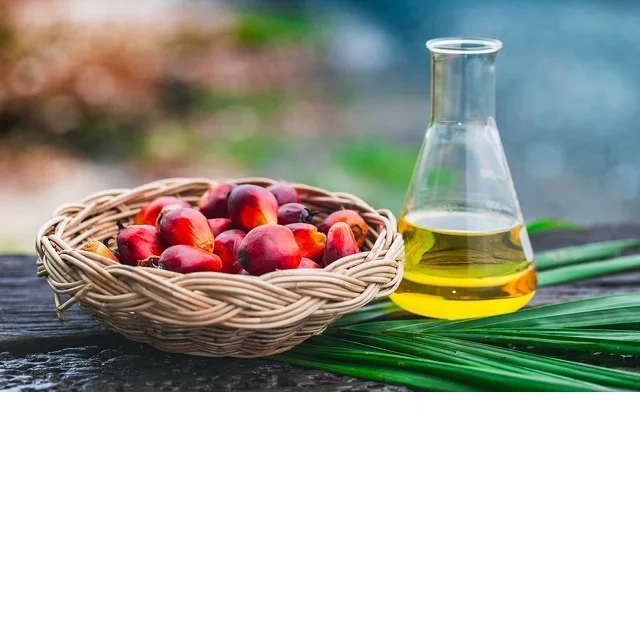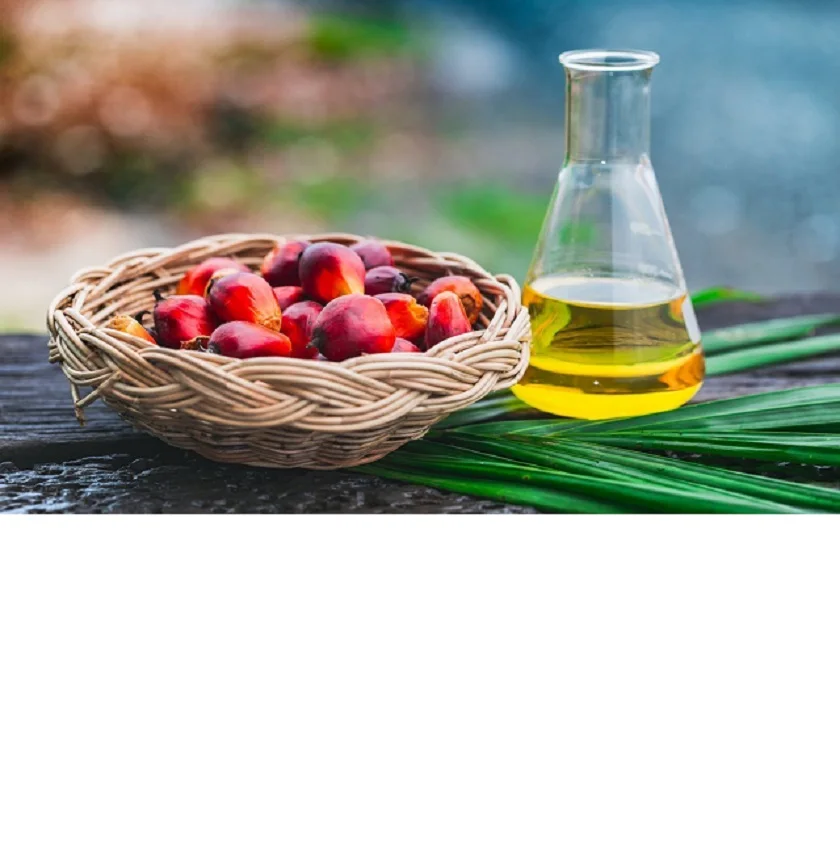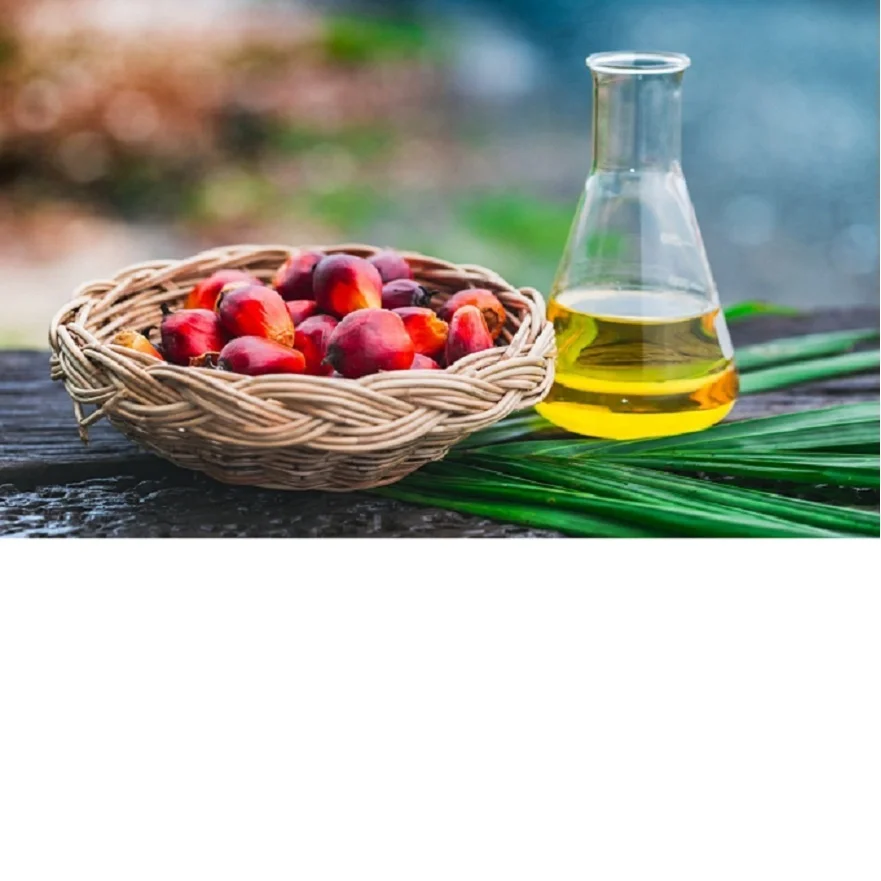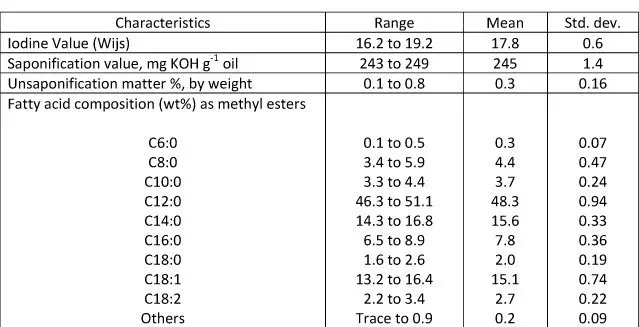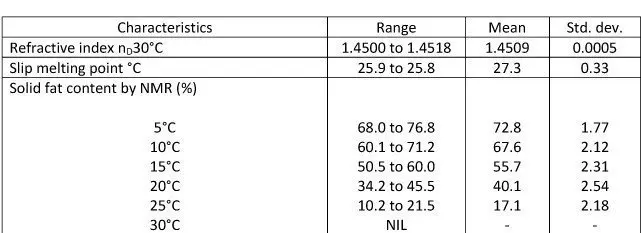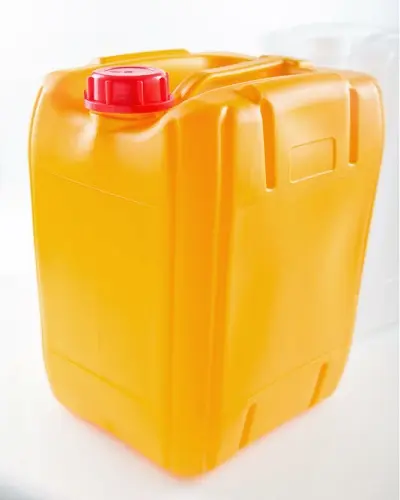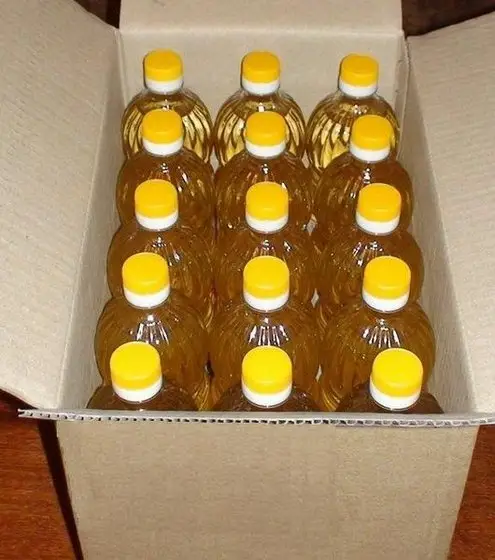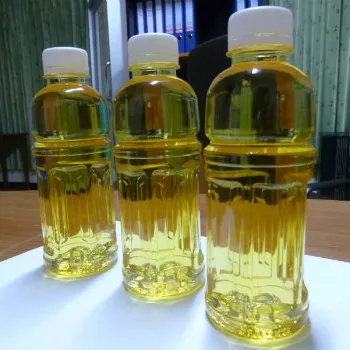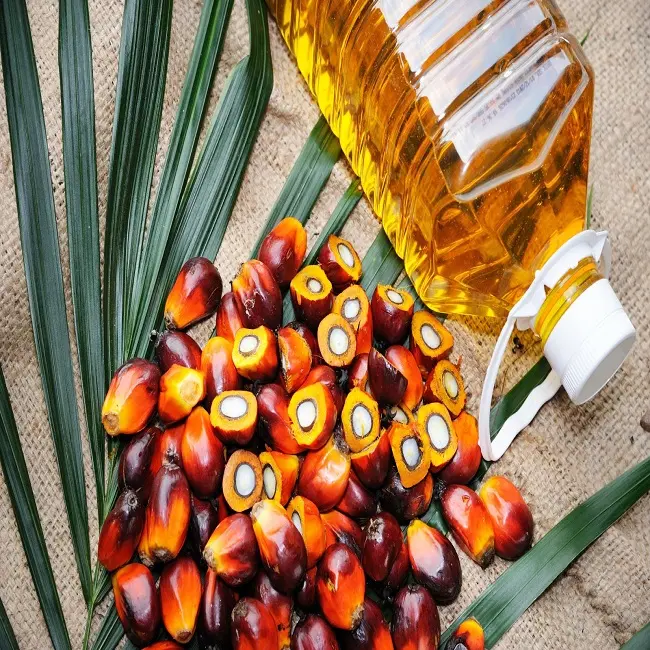Рафинированное Отбеленное дезодорированное (RBD) масло пальмового
- Категория: Palm Oil >>>
- Поставщик: TRADE,4,YOU,LTD
Поделиться:
Описание и отзывы
Трекер стоимости
| Месяц | Минимальная цена | Макс. стоимость |
|---|---|---|
| Sep-15-2025 | 452.61 $* | 475.26 $* |
| Aug-15-2025 | 448.3 $* | 470.25 $* |
| Jul-15-2025 | 376.65 $* | 395.56 $* |
| Jun-15-2025 | 441.48 $* | 463.57 $* |
| May-15-2025 | 384.6 $* | 403.76 $* |
| Apr-15-2025 | 433.86 $* | 455.9 $* |
| Mar-15-2025 | 429.49 $* | 450.39 $* |
| Feb-15-2025 | 426.81 $* | 447.13 $* |
| Jan-15-2025 | 422.92 $* | 443.90 $* |
Характеристики
Refined Bleached Deodorized (RBD) Palm Kernel Oil or PKO is an edible plant oil derived from the kernel of the oil palm (Elaeis guineensis). It should not be confused with the other two edible oils derived from palm fruits: Palm oil, extracted from the pulp of the oil palm fruit, and coconut oil, extracted from the kernel of the coconut. It is widely used throughout for the production of “Soap”, “Cosmetic” and “Food Industries”. It has been Refined, Bleached and Deodorized after it’s been extracted from the kernel of the palm tree. This non–chemical refining process results in a white to off–white colored material with a bland to nonexistent odor and taste. It is naturally high in saturated fatty acids, causing it to have a higher melting point and remain solid at room temperature. It is a stiffer raw ingredient than palm fruit oil and has a higher percentage of lauric acid.
Palm fruit and Palm Kernel




It is an edible Plant derived from the Kernel of the Oil Palm. It should not be confused with the other two edible oils derived from Palm Fruits: It is extracted from the pulp of the oil palm fruit, and coconut oil, extracted from the fruit of the Coconut.
Palm kernel, palm and coconut oil are three of the few highly saturated vegetable fats; these oils give the name to the 16–Carbon Saturated Fatty Acid and palmitic acid that they contain. It is semi–solid at room temperature, is more saturated than palm oil and comparable to coconut oil.




Palm Oil VS Palm Kernel Oil
Palm Oil VS Palm Kernel Oil
It is similar to Coconut Oil, is high in Saturated Fats and is more saturated than palm oil. It is high in Lauric Acid which has been shown to raise blood cholesterol levels, both as LDL–C (Cholesterol contained in low–density lipoprotein) and HDL–C (Cholesterol contained in high–density Lipoprotein). It does not contain Cholesterol or Trans Fatty acids.
It is commonly used in commercial cooking because it is lower in cost than other oils and remains stable at high cooking temperatures. The oil can also be stored longer than other vegetable oils.
STANDARD SPECIFICATION OF REFINED
PARAMETER | SPECIFICATIONS |
RBD PALM KERNEL OIL | |
Appearance | Clear Light Yellow |
Free Fatty Acid (As Oleic) % | 0.13 Max |
Free Fatty Acid (As Lauric) % | 0.1 Max |
Moisture & Impurities | 0.1 Max |
Iodine Value | 19 Max |
Slip Melting Point | 23 – 30ºC |
Peroxide Value meq/Kg | 0.5 Max |
Colour (5.25" Lovibond Cell) | 1.5 R/15 Y Max |
Odor | Odorless |
Product Information Sheet
Product Description:
Refined, Bleached and Deodorized Palm Kernel Oil.
Description:
Palm Oil and Palm Kernel Oil are both sustainable tropical oils which come from the
fruit of the oil palm trees. These versatile oils, however, have very different chemical
compositions and physical characteristics. Palm Oil is often used for edible purposes
while palm kernel oil is mainly used for non–edible purposes such as making soaps,
cosmetics and detergents.
Application:
Palm Kernel Oil does not contain Cholesterol or Trans Fatty Acids. Palm Kernel Oil is
commonly used in commercial cooking because it is lower in cost than other oils and
remains stable at high cooking temperatures. The oil can also be stored longer than
other vegetable oils.
Ingredients:
RBD Palm Kernel Oil.
Available Sizes:
We are offering multiple packaging options for Retail and Industrial consumers. Our
packaging solutions have several advantages that extend shelf life, improve cost
savings, lower pack weight and freight cost savings. We can ship RBD Palm Kernel oil
in Jerry Cans of 5, 18, 20 & 25 Liters, 1 & 2 Liters in Pet Bottles, Flexi–Bag, and
190/Kgs. in Steel and Plastic Drum. We can also ship in IBC Tote.
Shelf Life:
12 months from production when stored in original packaging at 25ºC (77ºF) max and
humidity at 65% max. Please keep away from direct sunlight and odoriferous materials.
Recommended Storage Conditions:
<> Store in a cool, dry place.
<> Avoid direct exposure to sunlight.
REFINED BLEACHED DEODORIZED (RBD) PALM OIL
RBD Palm Oil
RBD Palm Oil or Refined Bleached Deodorized Palm Oil (RBDPO) is obtained from refining crude palm oil. RBD Palm Oil is a light yellow liquid or semi–solid at room temperature, melting to clear yellow liquid when heated. It is used as Frying Oil for Food industries, such as, instant Noodles, Snack Foods, etc. It is also made into various forms such as Margarine, Shortening, Ice Cream, Condensed Milk, Vanaspati Ghee, Soap, etc. It is the raw form of palm oil that is refined and sold in the world’s commodity markets. Many companies fractionate it further to produce palm oil for cooking oil, or process it into other products. Indonesia is the world’s largest producer of palm oil. It surpassed Malaysia in 2006, producing more than 20.9 million tonnes. Indonesia expects to double production by the end of 2030.
Palm oil, like all fats, is composed of fatty acids, esterified with glycerol. Palm oil has an especially high concentration of saturated fat, specifically the 16–carbon saturated fatty acid and palmitic acid its name is derived. Monounsaturated oleic acid is also a major constituent of Palm Oil. Unrefined Palm Oil is a significant source of tocotrienol, part of the Vitamin E family.
Palm Oil
After milling, various Palm Oil Products are made using refining processes. First is Fractionation, with Crystallization and Separation Processes to obtain Solid (Stearin), and Liquid (Olein) Fractions. Then Melting and Degumming Removes Impurities. Finally, the Oil is Filtered and Bleached. Physical refining removes smells and coloration to produce “Refined, Bleached and Deodorized Palm Oil” (RBDPO) and free fatty acids, which are used in the manufacturing of Soaps, Washing Powder and other Products. It is the Basic Palm Oil product sold in the world’s commodity markets. It fractionates further to produce RBD Palm Olein for cooking oil, or process it into other products.
Differences Between Saturated and Unsaturated fatty acids
Health Benefits On Palm Oil
Palm Oil is one of the seventeen edible oils possessing an FAO/WHO food standard under the CODEX Alimentarius Commission Program.
Palm Oil has had a long history of food use for over 5,000 years.
Palm oil is extracted from the flesh of a palm fruit solely by cooking and pressing. It should be clearly distinguished from Palm Kernel Oil and Coconut Oil because it has lower levels of saturated components with no significant content of Capric, Lauric and Myristic acids.
Palm oil contains an equal proportion of saturated and unsaturated fatty acids with about 44% Palmitic acid, 5% Stearic acid (both saturated), 40% oleic acid (monounsaturated), 10% Linoleic acid and 0.4% alpha Linolenic acid (both polyunsaturated).
Like all other vegetable oils, Palm Oil is cholesterol–free.
Presently, it is consumed worldwide as cooking oil, in margarine and shortenings and is also incorporated into fat blends and wide variety of food products.
For most food uses, palm oil does not require hydrogenation, thus avoiding the formation of trans–fatty acids. Refined palm oil, as used in foods, is a rich source of Tocopherols and Tocotrienols having Vitamin E activity. Red Palm Oil is the only commercially available rich source of Carotenoids and can be used as a pro–vitamin A activity.
Palm oil without hydrogenation is an excellent frying oil. Unlike unsaturated oils such as Soybean oil, Corn oil, and Sunflower seed oil, it has lower tendency to oxidize and is resistant to the formation of polar components and cyclic polymers.
Like other common edible fats and oils, Palm Oil is readily digested, absorbed and utilized as a source of energy.
A number of recent controlled human studies in Europe, USA and Asia have confirmed that there is no significant rise in serum total cholesterol when using palm oil, and can be used as an alternative to other fats in the habitual diet.
In the above mentioned studies, the level of HDL cholesterol, regarded as beneficial, was unaltered or was not significantly enhanced.
The content of Lipoprotein (a) in blood plasma, a potent risk indicator for coronary heart disease, was significantly reduced when palm oil provided most of the dietary fat.
Palm oil has been demonstrated to be a necessary component in current dietary recommendations to achieve a balanced distribution between saturates Monounsaturates and Polyunsaturates. When humans consume diets having such fatty acid distributions, there is a tendency to improve the overall cholesterol lipoprotein ratios.
The minor constituents in palm oil namely; Carotenoids, Tocopherols and Tocotrienols have beneficial health properties including antioxidant, anti–cancer and cholesterol lowering effects. In addition, Carotenoids in palm oil are biologically active as pro–vitamin A.
Standard Specification of Refined Bleached Deodorized Palm Oil:





Crude Palm Oil (CPO)
It is pure and inedible oil (Unbleached) which is extracted and produced from the pulp of fruit of palm. The color of pulp is red. That’s why crude palm oil is naturally similar to pulp color because of high inactive Vitamin A content. It is different from kernel oil or coconut oil. Commonly it is combined or mixed with coconut oil to make highly saturated vegetable fat, which is also used for cooking purposes.
Main usage of crude palm oil is for cooking purposes and is largely used in South–East Asia, West Africa and some parts of Brazil. Commercial kitchens use it due to its low cost. It’s not healthy as its counterparts due to high content of saturated fats. Largest producer of CPO is Indonesia, Malaysia, Nigeria and Columbia. They are major exporters of palm oil.
Process of Palm Oil
Process of Palm Oil
Besides cooking purposes and food products, palm oil and derivatives known as fractions of the oil are used in the manufacture of pre–packaged food, cosmetics, cleaning products, hair care, soaps and personal care items. Palm Wax is used in the manufacture of candles. It is also used to manufacture biofuel for motor vehicles, shipping and aircraft fuel and one of its by–products is glycerin.
Crude palm oil, like all fats, is composed of fatty acids, esterified with glycerol. Palm oil has an especially high concentration of saturated fat, specifically the 16–carbon saturated fatty acid, palmitic acid, to which it gives its name. Monounsaturated oleic acid is also a major constituent of palm oil. Unrefined palm (Unbleached) oil is a significant source of Tocotrienol, part of the vitamin E family. Red palm oil is rich in carotenes, such as αlpha–carotene, ßeta–carotene and Lycopene, which give it a characteristic dark red color. However, palm oil that has been refined, bleached and deodorized from crude palm oil (called “RBD palm oil”) does not contain carotenes.
Palm Fruit Structure
Palm Fruit Structure
Palm oil is naturally reddish in color because of high ßeta–carotene content. It is not to be confused with palm kernel oil derived from the kernel of the same fruit or coconut oil derived from the kernel of the coconut palm (Cocos nucifera). The differences are in color (Raw palm kernel oil lacks carotenoids and is not red), and in saturated fat content: Palm mesocarp oil is 49% saturated, while palm kernel oil and coconut oil are 81% and 86% saturated fats, respectively. However, crude red palm oil that has been refined, bleached and deodorized, a common commodity called RBD (refined, bleached, and deodorized) palm oil, does not contain carotenoids. Many industrial food applications of palm oil use fractionated components of palm oil (often listed as “modified palm oil”) whose saturation levels can reach 90%; these “modified” palm oils can become highly saturated, but are not necessarily hydrogenated.
The oil palm produces bunches containing many fruits with the fleshy mesocarp enclosing a kernel that is covered by a very hard shell. The Food and Agriculture Organization (FAO) considers palm oil (coming from the pulp) and palm kernels to be primary products. The oil extraction rate from a bunch varies from 17% to 27% for palm oil, and from 4% to 10% for palm kernels.
Along with coconut oil, palm oil is one of the few highly saturated vegetable fats and is semisolid at room temperature. Palm oil is a common cooking ingredient in the tropical belt of Africa, Southeast Asia and parts of Brazil. Its use in the commercial food industry in other parts of the world is widespread because of its lower cost and the high oxidative stability (saturation) of the refined product when used for frying. Many processed foods either contain palm oil or various ingredients made from it.
Crude Palm Oil
Red Palm Oil
Since the mid–1990s, Red Palm Oil has been cold–pressed from the fruit of the oil palm and bottled for use as a cooking oil, in addition to other uses such as being blended into mayonnaise and vegetable oil.
Oil produced from palm fruit is called red palm oil or just palm oil. It is around 50% saturated fat considerably fat less than palm kernel oil – and 40% unsaturated fat and 10% polyunsaturated fat. In its unprocessed state, red palm oil has an intense deep red color because of its abundant carotene content. Like palm kernel oil, red palm oil contains around 50% medium chain fatty acids, but it also contains the following nutrients;
Carotenoids, such as αlpha–carotene, ßeta–carotene, and Lycopene
Sterols
Vitamin E
Use In Food
The highly saturated nature of palm oil renders it solid at room temperature in temperate regions, making it a cheap substitute for butter or hydrogenated vegetable oils in uses where solid fat is desirable, such as the making of pastry dough and baked goods. The health concerns related to tans fats in hydrogenated vegetable oils may have contributed to the increasing use of palm oil in the food industry.
Palm oil is also used in animal feed. In March 2017, revealed that palm oil is used to make milk substitutes to feed calves in dairies. These milk substitutes contain 30% milk powder and the remainder of raw protein made from skimmed milk powder, whey powder, and vegetable fats, mostly coconut oil and palm oil.
Biomass and biofuels
Palm oil is used to produce both methyl ester and hydrodeoxygenated biodiesel. Palm oil methyl ester is created through a process called transesterification. Palm oil biodiesel is often blended with other fuels to create palm oil biodiesel blends. Palm oil biodiesel meets the European standard for biodiesels. Hydrodeoxygenated biodiesel is produced by direct hydrogenolysis of the fat into alkanes and propane.
Significant amounts of palm oil exports to Europe are converted to biodiesel. In 2014, almost half of all the palm oil in Europe was burnt as car and truck fuel. As of 2018, one–half of Europe’s palm oil imports were used for biodiesel. Use of palm oil as biodiesel generates three times the carbon emissions as using fossil fuel, and, for example, “biodiesel made from Indonesian palm oil makes the global carbon problem worse, not better.”
The organic waste matter that is produced when processing oil palm, including oil palm shells and oil palm fruit bunches can also be used to produce energy. This waste material can be converted into pellets that can be used as a biofuel. Additionally, palm oil that has been used to fry foods can be converted into methyl esters for biodiesel. The used cooking oil is chemically treated to create a biodiesel similar to petroleum diesel.
The World's Growing Appetite For Palm Oil
Standard Specification of Crude Palm Oil (CPO)











Besides being able to be processed into cooking oil, it turns out that a natural ingredient that has a myriad of benefits for maintaining healthy facial skin turns out to be in palm oil.
The following are the benefits of palm oil as a natural ingredient that has a million benefits to make a healthy and well-groomed face:
1. Helps Rejuvenate Skin
2. Can be Face Oil
3. Healthy Skin with Vitamin E
Supplying you crude palm oil (CPO) , and their derivates to meet the growing demand from market.
A fatty edible vegetable oil, yellowish in color, derived from the flesh and the kernel of the fruit of the oil palm tree.
Crude Palm Oils (CPO) is widely know for its uses and now is extensively being used in the production of Cooking Oils and Margarine as well as for bio-diesel.
Specifications:
Free Fatty Acid (FFA) in % as palmitic : 5 % max
Moisture & Impurities (M&I) as AOCS Ca 2c-25 : 0.5% max
Iodine value (AOCS Ca 1-25) : 48-56
Slip Melting Point (AOCS Cc 3-25): 29° – 34 ° celcius
Solidify point 16° – 21 ° C
Deteration of Bleachability Index (DOBI) ; 2.5 mek min
Packing:
Flexi bag for container
Bulk Tanker / Vessel
STANDARD SPECIFICATION OF CRUDE PALM OIL (CPO)
https://www.ariyancorp.com 1 | P a g e
Product Information Sheet
Crude Palm Oil (CPO)
Description: Palm is pressed and then the material after pressing is extracted.
Ingredients: 100% Palm Oil
Origin: Indonesia or Malaysia
Application: Crude Palm Oil is used for different industrial purposes. Palm oil is edible oil which
is extracted from the pulp of fruit of oil palms. The color of pulp is red. That's why
crude palm oil is naturally similar to pulp color because of high inactive vitamin A
content. It is different from kernel oil or coconut oil. Commonly it is combined or
mixed with coconut oil to make highly saturated vegetable fat, which is also used
for cooking purposes.
Available Sizes: We are offering multiple packaging options for Retail and Industrial
consumers. Our packaging solutions have several advantages that
extend shelf life, improve cost savings, lower pack weight and freight
cost savings. We can ship Crude Palm Oil (CPO) in 190/Kgs. in Steel
and Plastic Drum. We can also ship in IBC Tote (1/MT), Flexi–Bag
(21/MT) and Bulk (Vessel).
Recommended Storage Conditions:
<> Store in an ambient temperature and kept at a dry place.
<> Avoid direct exposure to sunlight.
<> Product that has been opened should be used as soon as possible.
